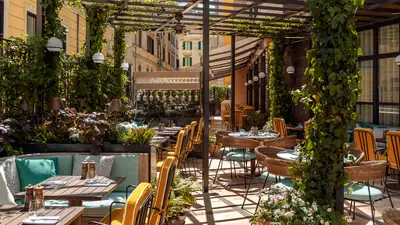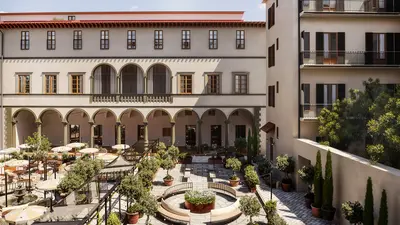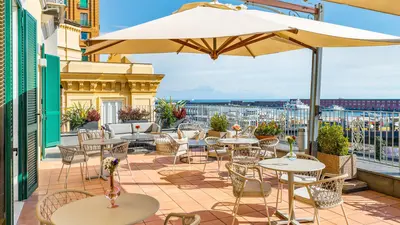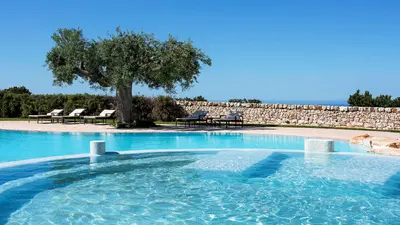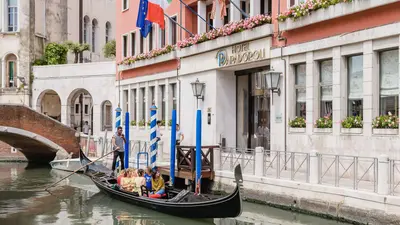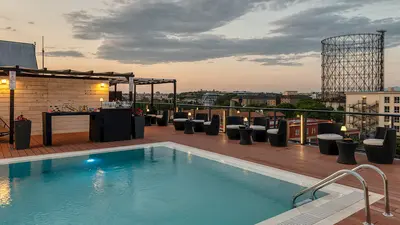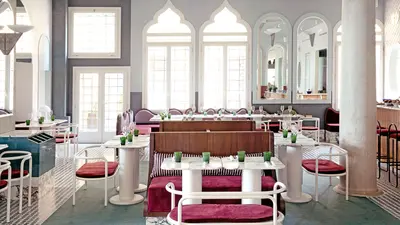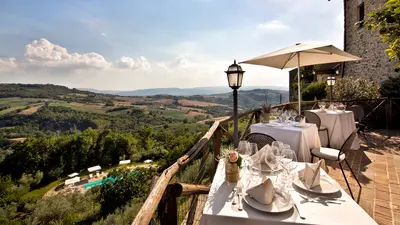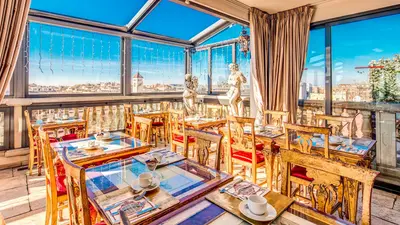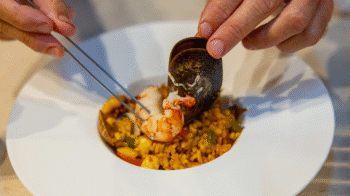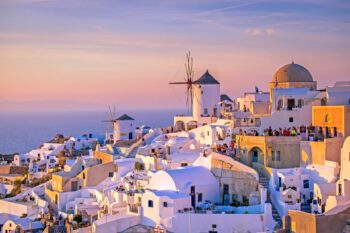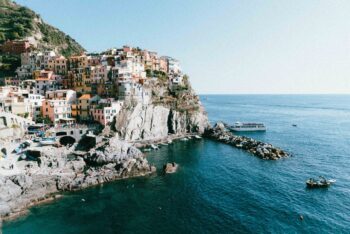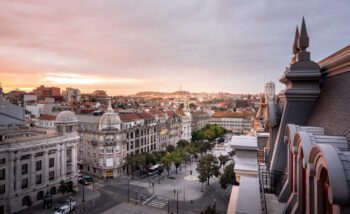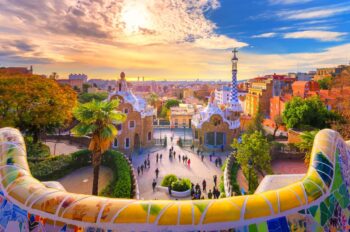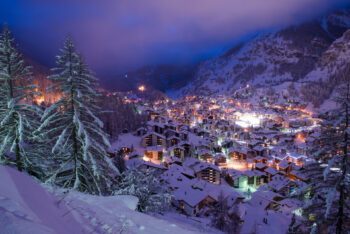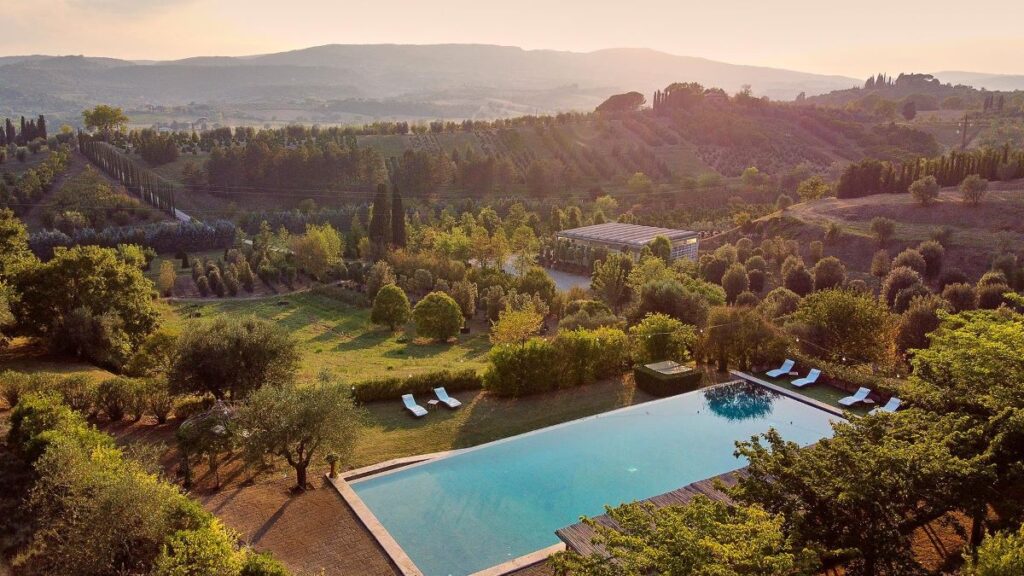
With more than 4,000 years of history and 350 official varieties across 20 varied regions, the scope of Italian winemaking is immense. So before you head straight for Tuscany, it’s worth noting what other varieties and wine regions are ripe for discovery.
Living la dolce vita doesn’t just end with Italy’s prized grapes. The best vineyard escapes pair world-class wines with regional cuisine, luxury lodgings and cultural experiences, allowing you to linger a little longer among the vines.
Tuscany wine and hotels
Known for: Chianti, Montalcino, Montepulciano, trebbiano and vermentino
Few wine regions have the instant name recognition of Tuscany’s Chianti, whose winding roads are lined with cypress and silver olive trees. Even those who don’t know where it falls on the map have heard of this variety. Blessed with a mild climate, lush vegetation and fertile soil, the spot is in prime position to cultivate Italy’s numero uno grape: sangiovese.
Seven official sub-zones produce distinctive wines (identified on each label) in addition to Chianti Classico DOCG. Traditionally, this soulful red was served in a fiasco – a wide bottomed bottle wrapped in straw used to protect the bottle during transport and maintain temperature. Renaissance Tuscany Il Ciocco Resort & Spa in the Serchio Valley makes it easy to indulge in tasting wine, biking, hiking and horse-back riding through the countryside.
Nestled within the larger Chianti area, Classico emerged as Italy’s first legally protected wine region more than 300 years ago. Grown at higher elevations, Chianti Classico wines are known for their fruity cherry, spice notes and firm tannins, and identified with a black rooster seal on the bottle. Toscana Resort Castelfalfi is only an hour away, with its own olive oil and wine estate, plus cooking classes and truffle hunting experiences.
While Chianti wines tend to express more fruity and floral notes, more herbaceous wines can be found in the micro-climate of Montalcino. In addition to being a picture-perfect medieval town, this destination is the motherland of Tuscany’s fullest, richest and long-aging wine, Brunello di Montalcino.
After winery hopping, head to Il Patriarca’s La Taverna del Patriarca for traditional Tuscan fare, or I Salotti del Patriarca for Michelin-starred cuisine that showcases the produce of the region, for a well-rounded appreciation of the rich wine and culinary heritage of Tuscany. Also well worth a visit, Marchesi Antinori is a 26th-generation winery with history dating back to 1385, and was awarded first place in the World’s Best Vineyards 2022.
Piedmont wine and hotels
Known for: nebbiolo, Barolo, Barbaresco and moscato d’Asti
Cradled between the western Alps and Apennines in Italy’s northwest corner, the quietly undercover Piedmont region is cultivating a distinct identity of its own. Once home to the House of Savoy, the ruling family of Italy, it’s no surprise that this area gave birth to equally regal Italian wines.
Geographically distinctive, Piedmont’s continental climate is defined by two elements: the cool, mountainous terrain and the warm Mediterranean. Combine these opposite forces and ideal winemaking conditions are created. Misty mornings fade into sun-drenched days and transform into cool nights – the perfect diurnal shift for the region’s most famous drop: nebbiolo.
One of the best spots to drink in good wine and equally good views? Sitting poolside at Relais San Maurizo, a former Cistercian monastery overlooking the Langhe valley. This hilltop hotel is home to the one Michelin-starred Guido da Costigliole restaurant located in what was once the ancient monastery cellars. Classic Piedmontese dishes include vitello tonnato (cold veal covered in tuna-flavoured sauce) and handmade agnolotti del plin of beef, pork and rabbit.
Umbria wine and hotels
Known for: Orvieto, sangiovese, sagrantino and natural wines
Dubbed the ‘green heart of Italy’, this landlocked agricultural region is considered one of Italy’s hidden gems, often overshadowed by its more famous neighbour, Tuscany. But with its clay soils and a good presence of limestone, the region has actually been producing wines since 1549, when monks used Montefalco grapes to craft a sweet sacramental wine.
In the late 1970s, Sagrantino made a resurgence, with makers cultivating dry wines that complement equally sharp cheeses, black truffle and meats. Today, natural wine-making methods are coming to the fore, with a new wave of young producers flocking to the region.
When it comes to unique stays, Umbria offers no shortage of converted castles, abbeys, churches, and farmhouses. And one place to experience the enchantment of countryside seclusion, without forgoing luxurious creature comforts, is at Aethos Saragano.
With 10 luxury suites and apartments within a meticulously restored medieval village, it’s the perfect place to disconnect while indulging in old-world charm. Set out on one of the hikes across Umbria’s regional parks, learn more truffle hunting, and if you visit in the summertime, don’t miss Umbria Jazz – one of the most important jazz festivals in the world.
Veneto wine and hotels
Known for: Prosecco and pinot grigio
As a wine region, Veneto brings a heavy pour of history to the table. Today, the region’s significance is due in part to the volume of pinot grigio it produces and the massive growth in popularity of Prosecco – the basis for everyone’s favourite summer cocktail, the Aperol spritz.
More recently, Valpolicella, amarone, soave and Bardolino are helping to keep Veneto in the spotlight. The region’s expansive territory spans from the Adriatic Sea’s azure waters to the majestic peaks of the Dolomite mountains, creating a diverse and captivating landscape.
For those with the freedom of a rental car, Veneto’s picturesque wine country awaits just an hour drive from Venice. Leaving the bustling city behind, winding roads reveal charming houses nestled on steep hillsides. Here you’ll discover La Strada del Prosecco, also known as the Prosecco Road, stretching from Conegliano to Valdobbiadene.
This route is dotted with family-run cantines (vineyards) where you can quench your thirst with Italy’s favourite bubbly. If red wine is your preference, Conegliano marks the beginning of the Strada dei Vini del Piave, where you can sample the nation’s versions of cabernet and merlot. Pull over at any point on your road trip and be rewarded with heart-stopping views across the emerald hills.
Looking for more inspiration? Read Buon Appetito: An Epic Italian Food Journey.
Feature image: Il Patriarca, Tuscany, Italy. Source: Supplied.
